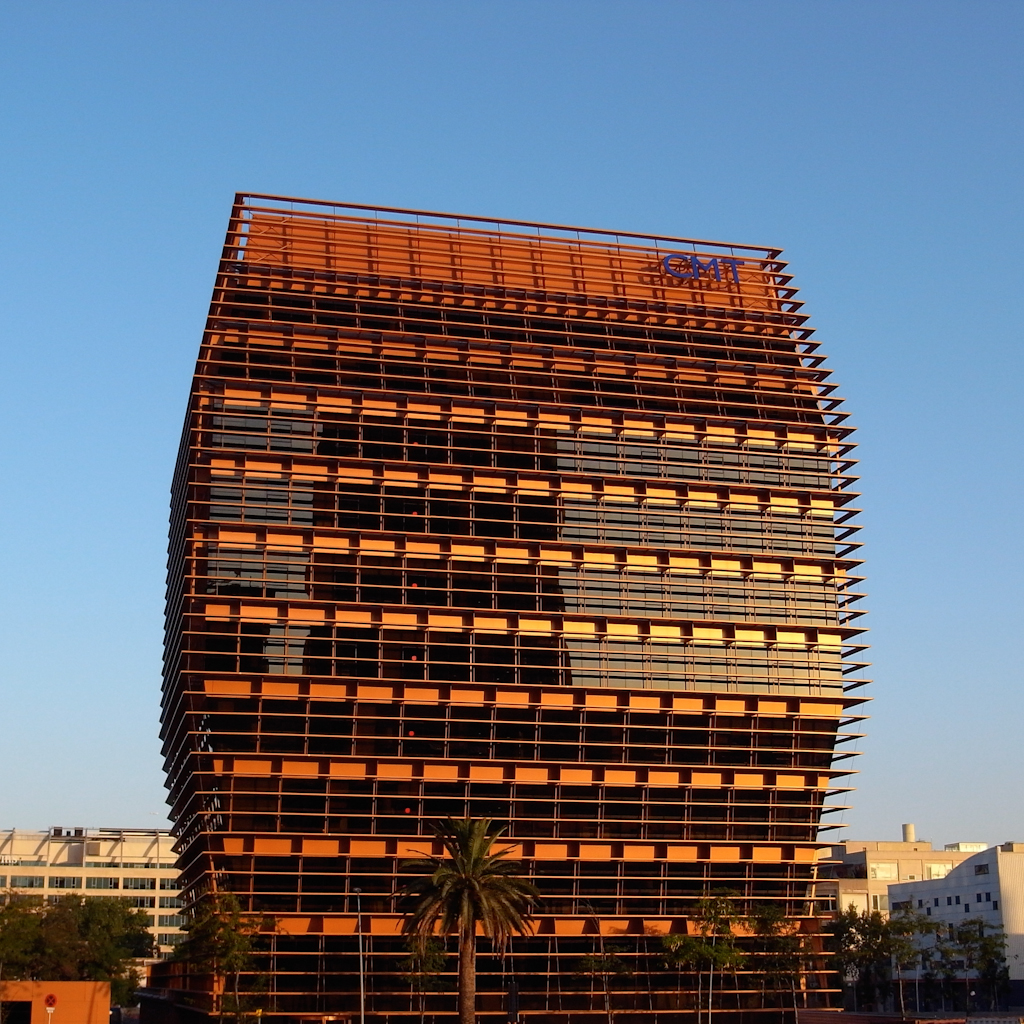The city of Barcelona is known for its modernist buildings. But it also houses a futuristic architectural style that also attracts attention for its innovative design and advanced technology.
One example is the Torre Glòries, formerly known as Torre Agbar, a 38-story skyscraper designed by Jean Nouvel that resembles a huge pencil.
Another outstanding building is the Hotel Vela, a luxury hotel located on the Barceloneta beach, designed by architect Ricardo Bofill and reminiscent of a sail.
The Media-TIC building, designed by Enric Ruiz Geli, stands out for its futuristic glass and steel façade.
On the other hand, the Forum Building, designed by Swiss architects Herzog & de Meuron, is the headquarters of the Universal Forum of Cultures 2004 and has numerous solar panels that are part of the facade.
The Science Museum is another example of futuristic architecture in Barcelona. The Mercat de Santa Caterina is a market renovated by the architect Enric Miralles, which stands out for its undulating and colorful structure.
The scope of futuristic architecture
Futuristic architecture in Barcelona is not only limited to buildings, it can also be found in some public spaces.
For example, Plaça de les Glòries features an installation called “The Beehive”, designed by artist and architect Antoni Gaudí, which features a wrought iron structure that resembles a giant beehive.
The Catalan capital has a rich and varied architecture that goes beyond modernism.
With futuristic buildings and public spaces that use advanced technology, innovative materials and organic forms, Barcelona is consolidating its position as an avant-garde and modern destination for architecture lovers.
Various projects
Futuristic architecture in Barcelona continues to develop, and one of the most ambitious projects is Norman Foster’s new tower at the Port of Barcelona.
Known as the Porta Fira Tower, this 113-meter-high structure is one of the tallest buildings in the city.
Its design was inspired by the figure of a woman dressed in a tunic, and it has a colored glass façade that changes color according to the time of day.
Another futuristic project in the city is the remodeling of Camp Nou, FC Barcelona’s stadium. The new design, created by Japanese architectural firm Nikken Sekkei, includes an undulating glass and steel façade that resembles a river.
In addition to offering an enhanced fan experience, the new stadium is also designed to be more sustainable, with a number of renewable energy systems integrated into its design.
A futuristic Barcelona.

